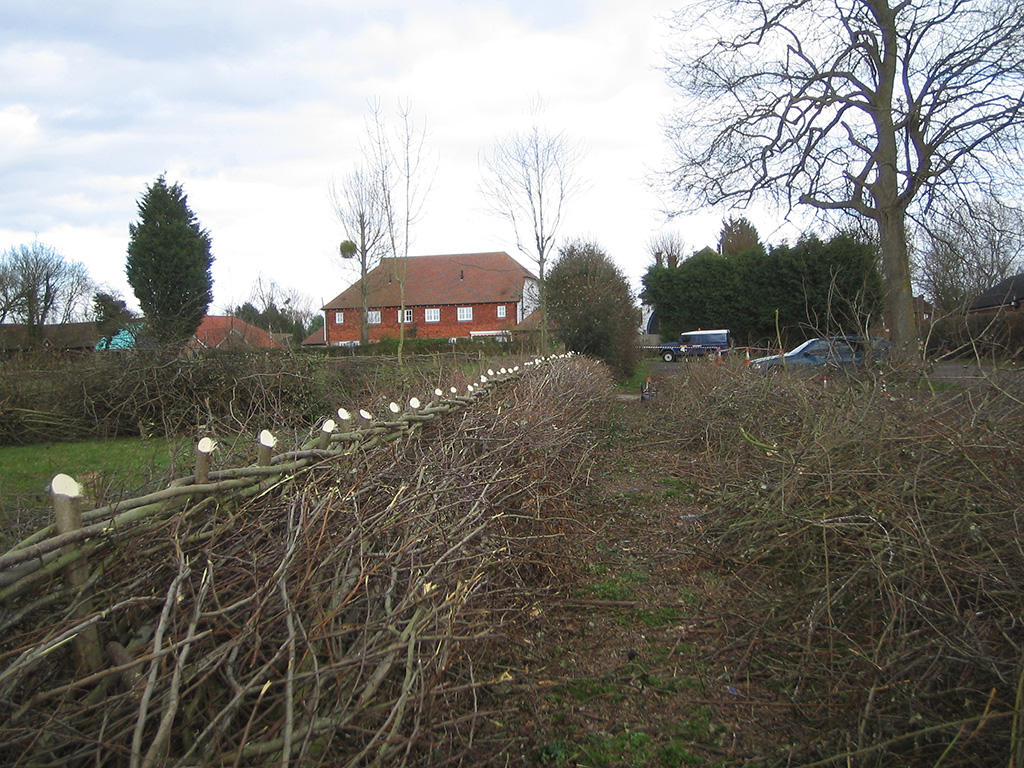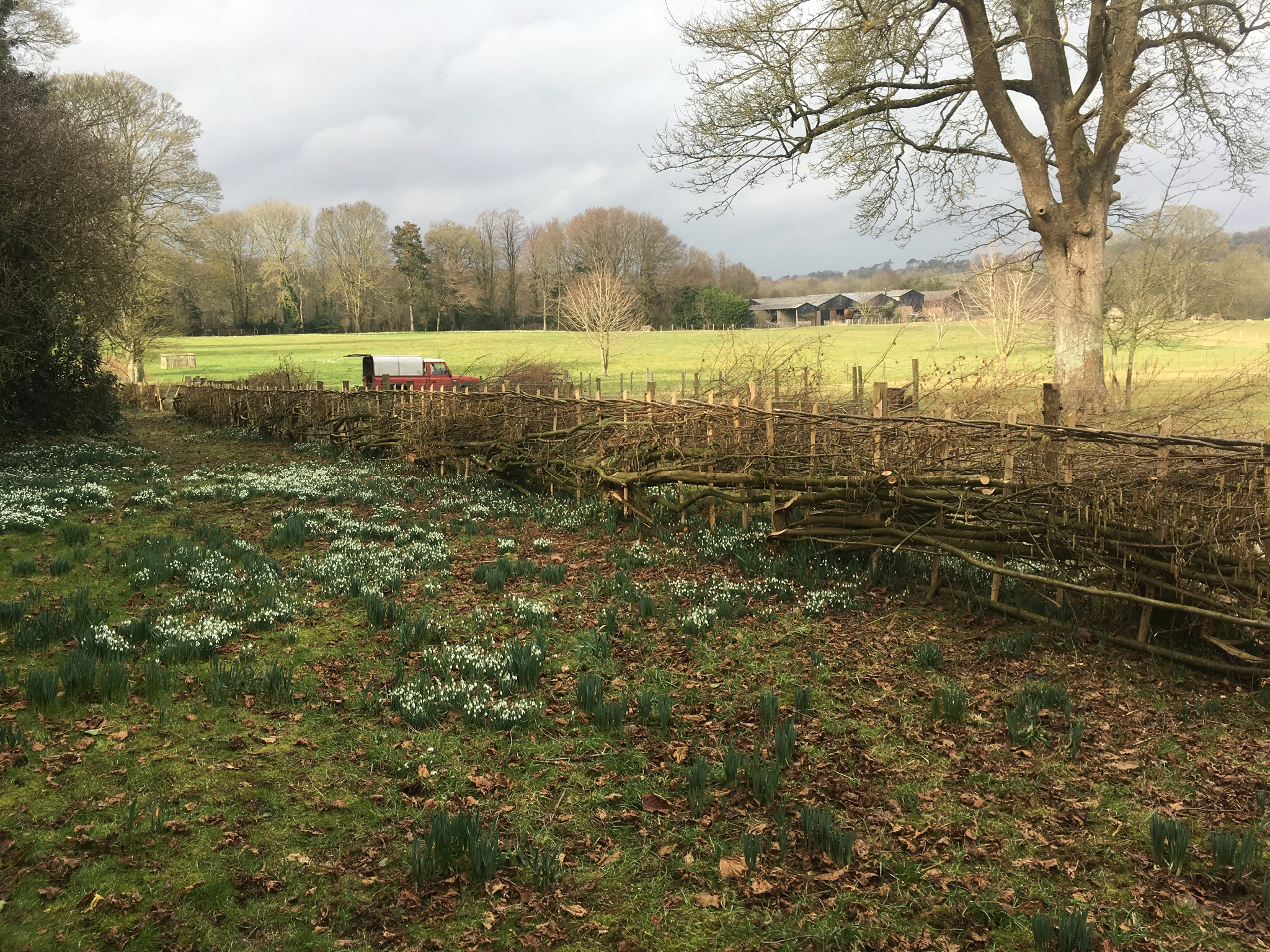
Hedgelaying
Hedgerows are the most widespread semi-natural habitat in the UK, providing shelter for wildlife, stock and crops and helping to conserve natural resources such as soil and water. Hedgerows and their associated ground flora, banks and ditches are vital for the survival of declining species which are dependent on woodland edge, scrub or rough grassland habitats. They provide a valuable forage resource and corridor for movement of pollinators, predatory insects and small mammals.
Hedgelaying is the traditional method of restoring an old, gappy hedge by encouraging regrowth from the base. Managing hedgerows in this way extends the life of the hedge as a whole and creates a constant supply of new, bushy growth, providing cover for a greater number of species.
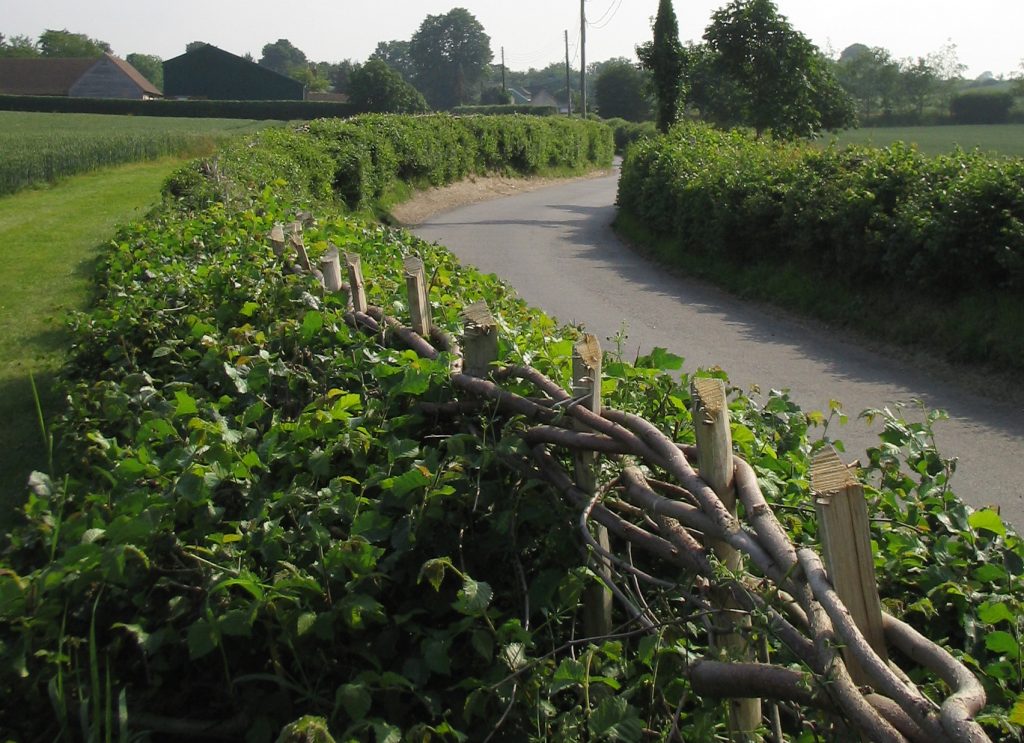
We lay hedges ranging from a garden hedge a few metres long, to large agricultural contracts. Grants for hedgelaying are available: to discuss your hedge or for further information please contact us.
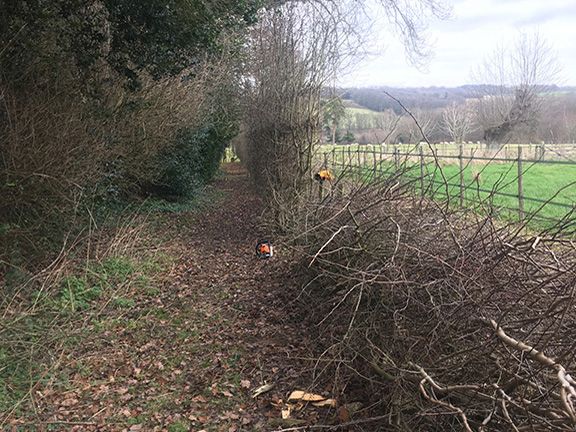
A hedge needs to be around 3 metres high to lay, and most native species of mixed hedgerow will respond well. The time of year for hedgelaying is between October & March. A hedge that has been left to grow into a line of trees with large gaps would need to be coppiced down to ground level: this will allow it to regrow with multiple stems which can then be laid at a later date.
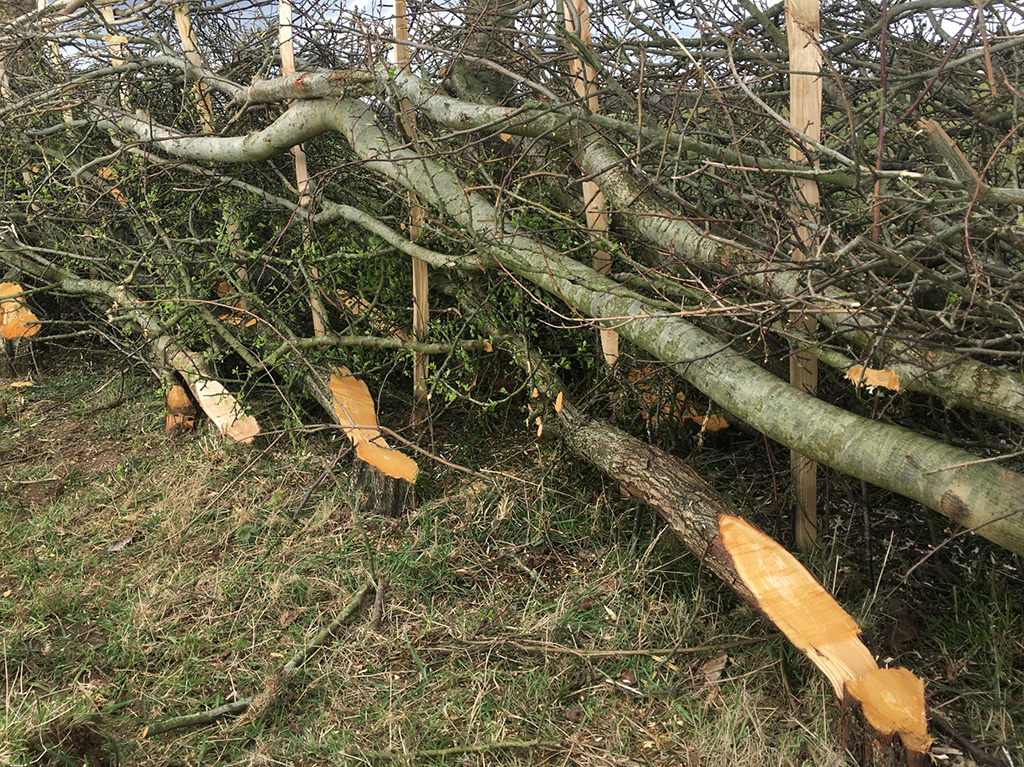
When a hedge is laid each stem is cut the majority of the way through near the base to form a pleach, bent over diagonally and laid on top of another stem. Stakes are inserted into the hedge and woven together with binders to form a strong supporting structure. New shoots grow up vertically from the pleaches in the spring.

A finished hedge will be approximately 120 cm high and 60-90 cm wide, and will provide a compact living structure to grow on into the size and shape you require.
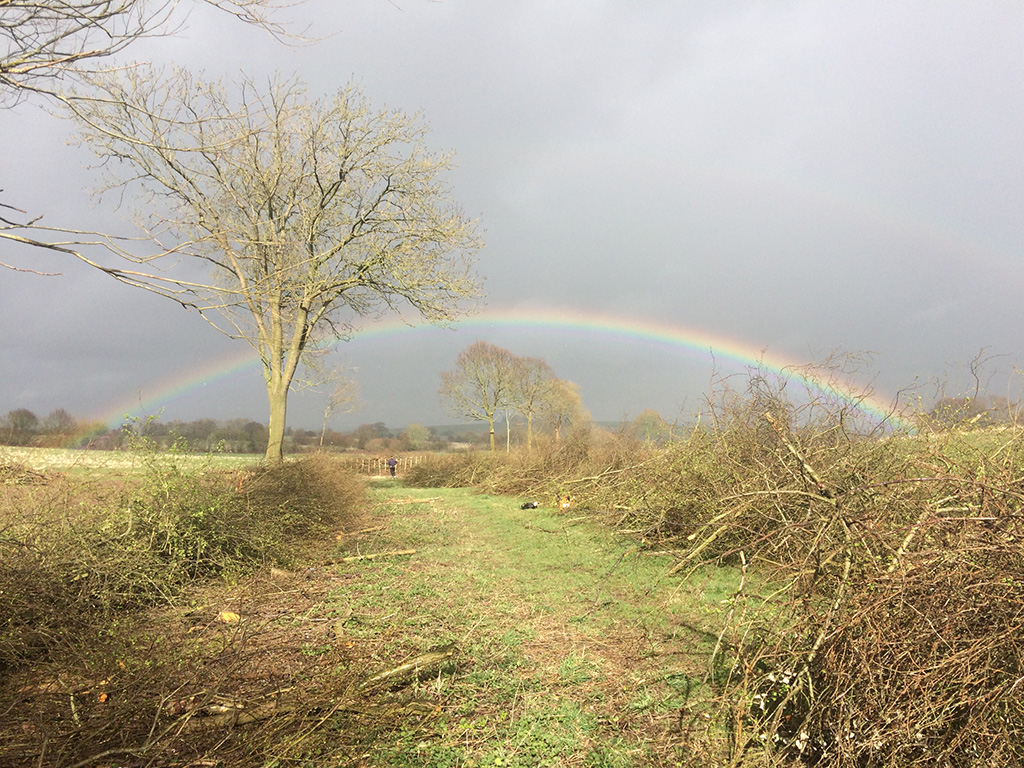
The hedgelaying process can produce a large amount of organic waste material. This can provide useful products such as firewood, faggots, peasticks or stakes. It can also be used to make a dead hedge to create a tempory barrier, or habitat for wildlife. Any additional waste material can be chipped for use as a mulch or burnt.

A hedge that has been left unmanaged can contain large amounts of bramble or old man’s beard, which can out-compete and stifle some hedgerow plants. Inevitably gaps can appear when these are cleared in renovation. After the hedge has been laid, gaps are replanted using native hedgerow plants such as hawthorn, field maple, hazel, hornbeam, guelder and dog rose. These are planted in a double staggered row and each have a stake and rabbit guard to protect them.
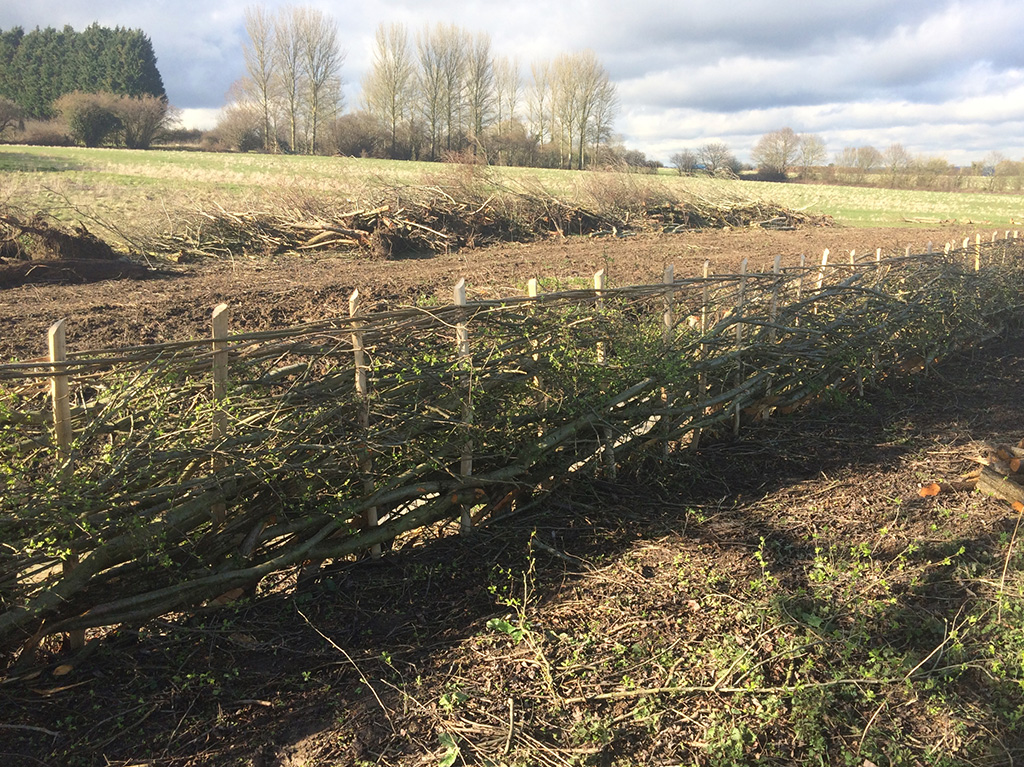
The hedge above was restored and stockproofed by hedgelaying under an agri-environment scheme on the Romney Marsh. There is a winter running ditch on the other side, and a number of crack willow trees have been removed to improve the flow of the water.
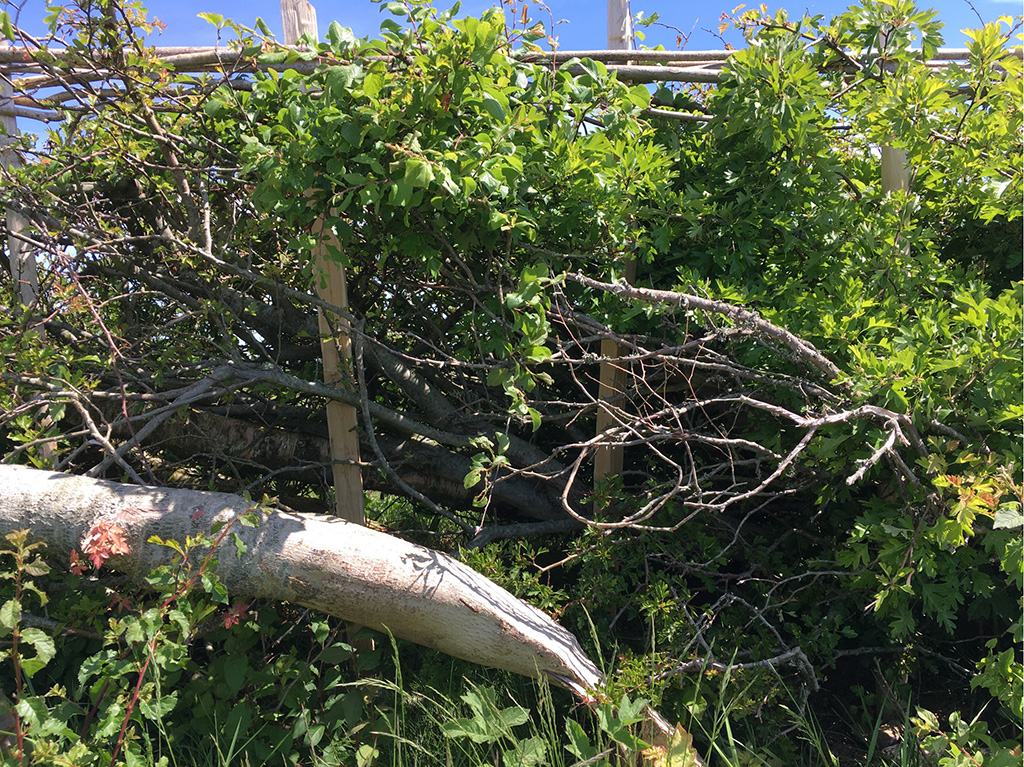
Maintenance and aftercare is crucial for a newly laid hedge to thrive. During the first summer after laying, the base of the hedge will need to be cleared of weeds to allow light through and encourage regrowth. These new growth stems from the base are critical to the long term structure of the hedge.
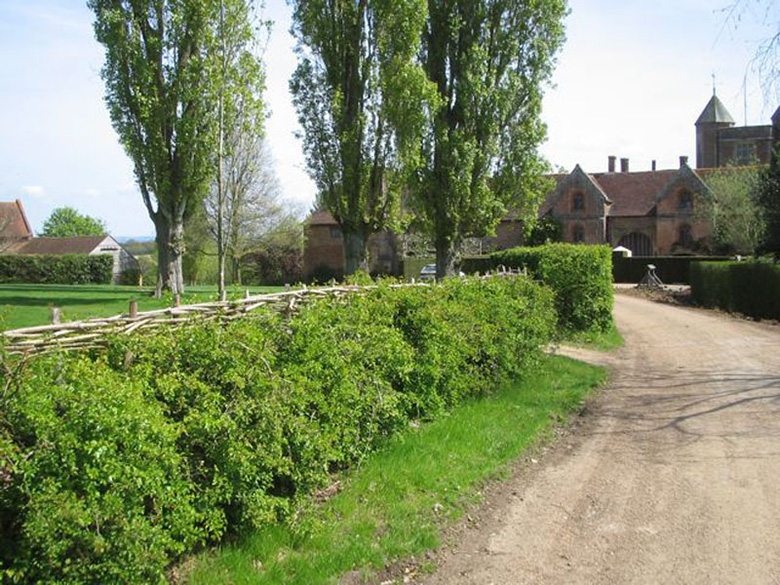
The new growth can be trimmed at the end of the summer to start forming the shape and size required, and can then be cut incrementally in sucesssive years. Gaps which appear after laying can be filled with new plants and by pleaching in the regrowth.
